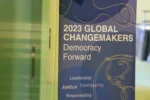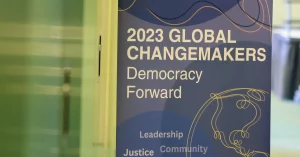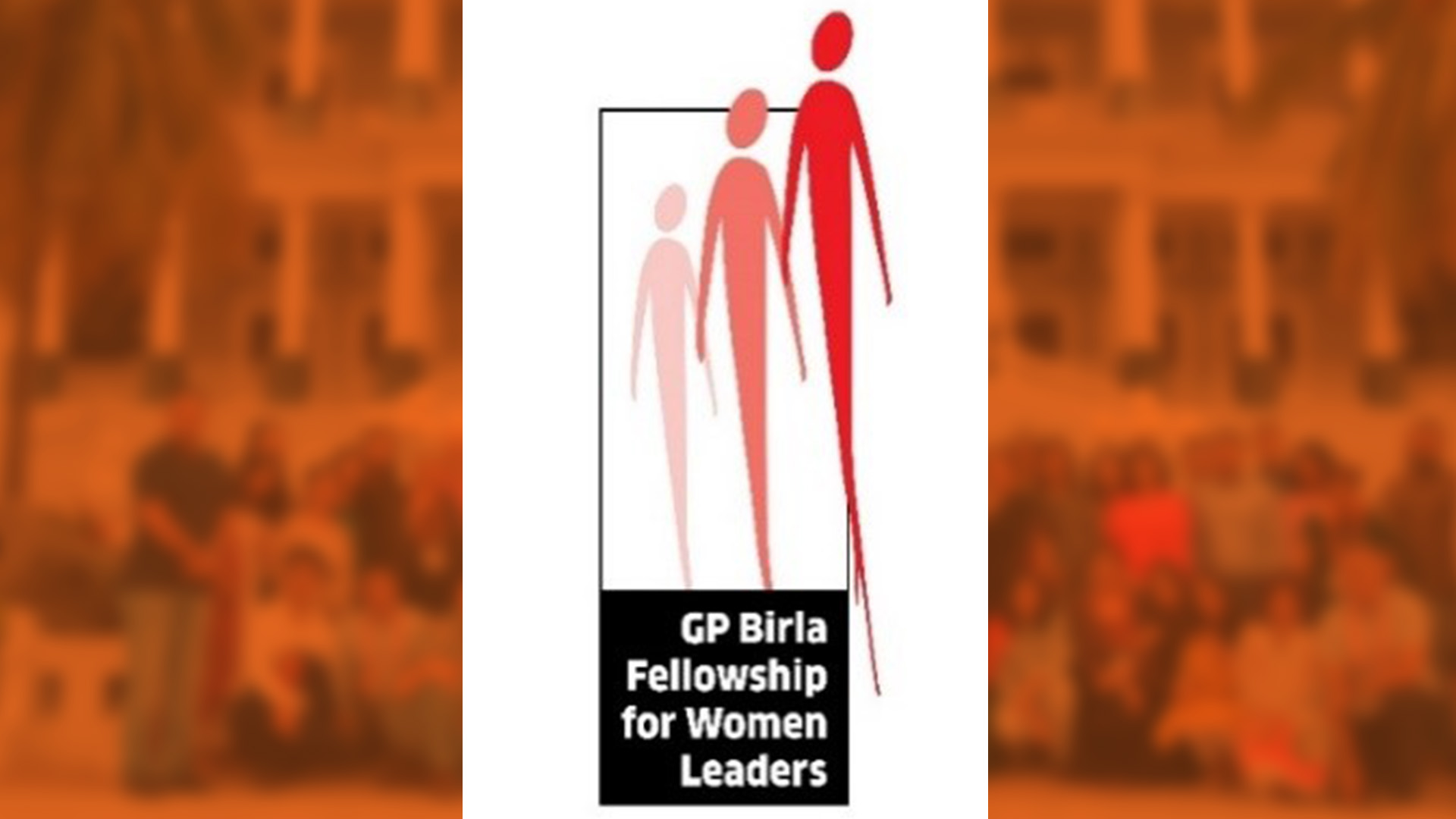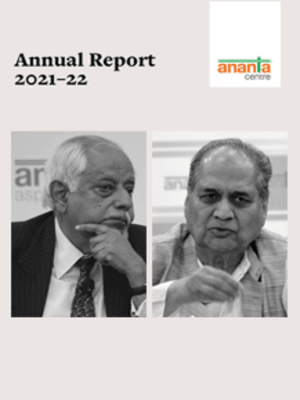H I G H L I G H T S
• Different strokes : Higher NPAs and a glorious summer
• GST collections buoyant, augurs well for recovery prospects
• Automobile manufacturers see green shoots of recovery
• Power consumption and railway freight pick up
• Investment in new projects still a cause for worry
• Unemployment rate lower, but mixed consumer sentiment
• Rural work demand under MGNREGA spurts in December
• A new framework for NBFC regulation
• Govt crackdown on WhatsApp, enters a court battle
Different strokes from RBI: Higher NPAs and a glorious summer
In just about ten days, the Reserve Bank of India or RBI came out with two different kinds of messages. On January 11, it released the Financial Stability Report for December 2020, which painted a rather ominous picture of the health of the Indian financial sector. The RBI report warned that the banking sector’s gross non-performing assets (NPA) or gross bad loans could rise to 13.5 per cent of its total advances by September 2021. This estimate was premised on a baseline scenario. The deterioration would be worse at 14.8 per cent, if the severe stress scenario were to be considered. This would be a major cause for concern and a reversal of the past trend of reducing NPAs. The banking sector’s gross NPAs had declined to 7.5 per cent in September 2020, compared to 8.4 per cent in March 2020. The RBI report notes that the increase in NPAs by September 2021 “highlights the need for proactive building up of adequate capital to withstand possible asset quality deterioration.” For the Union Government, which is to present the Budget for 2021-22 on February 1, the message is clear. It has to adequately provide for recapitalisation of public sector banks, which account for 60 per cent of total loans sanctioned by India’s banking sector.
But ten days later, on January 21, the RBI released its January 2021 Bulletin, which sounded bullish over the prospects of an economic recovery. The Bulletin noted that the Indian economy had come out of the pandemic crisis and the recovery was getting stronger. It noted that the vaccination drive against Covid-19 had led to optimism and the worst was over barring of course the “visitation of another wave”. Hinting at a possible onset of a “glorious summer”, the RBI report stated: “Shifts in the macroeconomic landscape have brightened the outlook, with GDP (gross domestic product) within striking distance of attaining positive territory and inflation easing closer to the target. If these movements sustain, policy space could open up to further support the recovery.” The RBI report was obviously buoyed by the First Advance Estimate of India’s GDP in 2020-21, which according to the National Statistical Office would decline by 7.7 per cent in real terms. Broadly endorsing such an assessment, the International Monetary Fund has also forecast that the contraction in 2020-21 would be 8 per cent for India, while the economy would bounce back with a growth rate of 11.5 per cent in 2021-22.
GST collections buoyant, augurs well for recovery prospects
The collections of goods and services tax (GST) for December 2020 provided yet another indication that the pace of economic activity has maintained an upturn. The December collections of GST (which captures transactions in the month of November) were estimated at Rs 1.15 trillion, a rise of 11.6 per cent over the same month of 2019. This enthused policy makers for two reasons. One, the December collections at Rs 1.15 trillion meant that for the third consecutive month this year, the GST collections were over Rs 1 trillion. Two, the month of December marked the highest-ever GST collections since its roll-out in July 2017. The last time GST collections had come closer to the December level was in April 2019 when the revenues were estimated at Rs 1.14 trillion. The bounce in the GST revenues is a reflection of not just a pick-up in economic activity, but of improved collection procedures like the introduction of the e-invoicing system for all units with a turnover of over Rs 500 crore. The e-invoicing system plugs revenue leakages and also makes the taxpayers return-filing process easier. From January 1, units with turnover of over Rs 100 crore have been brought under the e-invoicing system and all the remaining units too would come under it from April 2021. It is true that the December 2020 bump in GST collections was an outcome of the festival sales in November, and the January collections may not maintain the same momentum. But the larger coverage of e-invoicing system would help in plugging revenue leakage and could prevent any decline in the growth rate already witnessed in the last three months.
Automobile manufacturers see green shoots of recovery
Sales of passenger vehicles also saw a healthy rise in December 2020. India’s largest car maker, Maruti Suzuki notched up an increase in its sales to dealers by about 18 per cent over that in December 2019. Hyundai, Tata Motors, Toyota and Honda Cars also reported an increase in sales in this period of 25 per cent, 21 per cent, 14 per cent and 3 per cent, respectively. Among the top automotive makers, Mahindra & Mahindra was the only company that reported a 10 per cent fall in sales. The good news was that the inventory at the dealers’ level was lower than usual for passenger vehicles and tractors, which augured well for a continued increase of sales to replenish inventory in the coming months. Hyundai Motor India managing director, S.S. Kim, was reported saying that the company was proceeding with cautious optimism and anticipating “green shoots of recovery in 2021”.
Power consumption and railway freight pick up
Power consumption in the country also improved in December. At 107 billion units of power consumption in December, the rise was over 6 per cent over the same month of 2019, reflecting a spurt in economic activity. Until August 2020, year-on-year power consumption in India had remained in contraction mode for six consecutive months. September 2020 saw a rise in power consumption by 4.5 per cent. It rose smartly to 11.6 per cent in October, but the growth dipped to 3.12 per cent, raising questions about the sustainability of the economic recovery indicated by the power consumption growth levels in the previous two months. But the power consumption growth of over 6 per cent in December came as a relief. The Indian Railways too have begun seeing a rise in its freight loading and freight earnings.
Investment in new projects still a cause for worry
A major cause for concern was the continued tepid sentiment that prevailed in the area of private-sector investment. According to data compiled by the Centre for Monitoring Indian Economy or CMIE, the quarter ended December 2020 saw a decline in new projects for setting up factories, buildings and other assets to their lowest level since the outbreak of the Covid-19 pandemic in March 2020. Against Rs 7 trillion of new assets being created in the quarter ended December 2019, the performance in the quarter ended a year later saw a decline of over 88 per cent to Rs 0.8 trillion. The pace of investment in building assets or setting up new factories and projects is an important indicator of the growth trajectory in the future. A higher rate of such investment lays the foundations for a more sustainable growth path in the coming quarters.
The outlook for investment in the coming quarters does not appear to be very bright. The capacity utilisation level for industry, according to the RBI’s October survey, was pegged at about 50 per cent in the first quarter of 2020-21. This level should have picked up in the following quarters, but the RBI data for the second or third quarters of 2020-21 is not yet available. Going by anecdotal evidence from India Inc.’s top companies, the pace of investment in new projects has picked up in the second and third quarters of the current financial year. This would suggest that capacity utilisation in industry in the July-September and October-December quarters of 2020 must have also improved. Once that pick-up stabilises at a higher level, India’s concerns over poor investment demand should be addressed to some extent.
Unemployment rate lower, but mixed consumer sentiment
The rate of unemployment, measured by the Centre for Monitoring Indian Economy or CMIE, began moving south in January, after having spurted sharply in December. From a pre-pandemic unemployment rate of 7.76 per cent in February, the situation on the jobs front began deteriorating rapidly in the following months – up at 23 per cent and 22 per cent by April and May, respectively. The unemployment rate began declining from June onwards and after some months of fluctuations came down to as low a level as 6.5 per cent in November 2020. The month of December 2020, however, saw a sharp rise in the unemployment rate again to over 9 per cent, the sharpest month-on-month increase seen since April. But the trend changed again in January 2021. As on January 25, the 30-day average unemployment rate was estimated at 6.5 per cent, back to the relatively benign level of November. The nature of the decline in the unemployment rate showed that rural India had a different narrative from that of urban India. The unemployment rate in rural India has recovered quite sharply in January – down to 6 per cent in January so far, down from over 9 per cent in December. In contrast, the unemployment rate in urban India made a far less impressive recovery – it declined from 8.8 per cent in December to 7.8 per cent in January so far.
Even more interesting is the movement in the consumer sentiment index, maintained by CMIE. In his latest assessment of the movement in this index (with a base of 100 in October-December 2015), Mahesh Vyas of CMIE has noted how the middle-income households have seen a significant improvement in the consumer sentiment index in the quarter ended December 2020. The index has moved up to 52.7 in October-December 2020, from 45.2 in the previous quarter. But the difference in the confidence index for those between the top income-earning households in this group and the lowest income-earning households had widened in the quarter ended September 2020. But this difference has narrowed considerably in the quarter ended December 2020. This has happened largely because of the sharp gains in confidence in the two household groups that earn incomes between Rs 2 lakh and Rs 5 lakh a year and those earning between Rs 5 lakh and Rs 10 lakh a year. This is a recovery in the index for the middle-income households and shows a trend that will help policy makers make up on their mind on whether the Indian economy’s recovery is K-shaped or not (A K-shape recovery signifies a sharp recovery for some segments of the economy, while indicating a downturn for others).
Rural work demand under MGNREGA spurts in December
That the economic stress level saw an intensification in December could be gauged from the way the allocations of funds were made under the Mahatma Gandhi National Rural Employment Guarantee Act (MGNREGA). An estimated 26.34 million people demanded work, for which minimum wages had to be paid under MGNREGA, during December 2020, up sharply from 22.75 million people asking for similar work in the previous month, according to government data. More people in rural India ask for work under MGNREGA when they do not get any remunerative jobs elsewhere or their economic stress level worsens. The December 2020 level of work demand under MGNREGA was 16 per cent more than that in November 2020, but 113 per cent more than the demand for work in December 2019. The number of people demanding work under MGNREGA went up sharply from 12.8 million people in April 2020 to 36.1 million in May 2020 and further up to 43.9 million in June 2020. Since then, the number of such people kept declining on all the months till November 2020. The trend change in December, therefore, is an indication that things had deteriorated for rural Indians in the last month of 2020.
A new framework for NBFC regulation
A discussion paper from the Reserve Bank of India on a new regulatory structure for non-banking financial companies or NBFCs has pushed the financial sector reforms agenda forward. The objective of the discussion paper was to introduce a scale-based regulatory framework for NBFCs so that the larger entities among them could be segregated and subjected to more strict and robust rules almost similar to those that are enforced on banks. Such an approach has been favoured by the RBI to impart financial stability to this sector even as smaller NBFCs continue to enjoy relatively relaxed regulatory supervision. The proposed regulation will have a four-tier pyramid structure. The base layer will have NBFCs with an asset size of up to Rs 1,000 crore. These entities, accounting for over 95 per cent of the 10,000-odd NBFCs operational in India, are not taking deposits and will continue to enjoy easy regulatory supervision. Above the base layer will be the middle layer, which will come under tighter regulation. The third layer will cover about 25-30 NBFCs, which will be subjected to almost similar rules that are imposed on banks. For instance, the norms for recognising non-performing assets for such NBFCs will be made stricter by lowering it to loans remaining unpaid for over 90 days, from the current 180 days, the compensation package for the top managements would be subjected to regulatory clearance and single-lending as well as group-lending exposure norms would be enforced. The fourth layer would remain empty at present and the RBI would be free to place any large NBFC under this category. The NBFC sector has grown rapidly in the last ten years – their share in total bank credit has grown from about 12 per cent in 2010 to 25 per cent now. At the same time, a few NBFCs collapsed recently due to governance failure and regulatory gaps. The proposed regulatory structure for the NBFC sector could not have come a day too soon.
Govt crackdown on WhatsApp, enters a court battle
The Indian government’s response to a new policy to be rolled out by WhatsApp, the Facebook-owned messaging platform, has been swift and definitive. A few weeks ago, WhatsApp, which has over 400 million users in India, had notified that from February 8 it would roll out a new policy on privacy and data usage on its platform, which the users had to accept by that date failing which they would have lost access to the service. The new policy evoked sharp response from users and those who believed that their privacy would be seriously compromised under the new terms of usage. This adversely affected fresh downloads of WhatsApp and many users began switching over to other similar messenger services that had no such privacy-related usage terms.
WhatsApp too had responded quickly to what was clearly its biggest business challenge in the country. It had initially clarified that the new policy did not undermine the privacy of the messages with friends or family and the proposed changes were related only to optional business features on WhatsApp. The company also clarified to the users that their messages and private conversations remained private and encrypted, but such clarifications had little impact in terms of reassuring the users. Eventually, WhatsApp decided to postpone the roll-out of the new policy to May 15. If that setback was not enough, the Union ministry of electronics and information technology delivered yet another blow against the company. On January 19, it asked WhatsApp to clarify issues related to its new privacy and data transfer as well as sharing policies and general business practices. The deadline for the company to provide the sought clarifications was seven days.
The range of questions that WhatsApp had to address showed the seriousness the government had attached to the proposed change in usage terms. The information sought included: Details of services provided, categories of information collected by WhatsApp from users and the differences in the permissions and privacy policies WhatsApp followed in different geographies and the reasons for those differences. The government also asked WhatsApp to answer the five following questions: 1. Does WhatsApp profile its users based on their usage? 2. Does it share data with any other app or business unit of the same company? 3. Does it capture information about other apps running on the user’s mobile phone? 4. Which is the server on which India’s data on WhatsApp is hosted? 5. Does it offer third-party access to its users’ personal data? All these are probing questions. How WhatsApp responds to them and what the government does by way of remedial measures will provide some indication on how the privacy concerns of 400 million Indians will be addressed.
In its submission before the Delhi High Court, which is hearing a petition on violation of privacy by WhatsApp, the Indian government has raised yet another issue. It has argued that WhatsApp was following differential norms on privacy for its users in India and in Europe. It has been pointed out that the European users are given the choice to opt out of the new terms of the service. “The privacy policy offered to European users is not given to Indian users. This differential treatment is a cause for concern,” India’s Additional Solicitor General Chetan Sharma told the court. Clearly, this battle has been escalated to a new level.
Supported by
………………………………………………………………………………………………
(The views expressed are personal)
………………………………………………………………………………………………

























